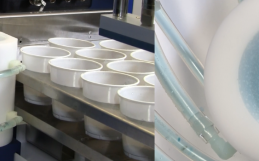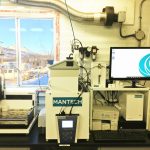Water is one of the most essential building blocks of life on Earth, and it is also one of the most vulnerable resources to impacts from human development. We are intrinsically tied to our natural water systems through our dependence on water for drinking, bathing, washing, etc. coupled with our reliance on modern sanitary sewers to transport waste away from our homes and businesses. However, we often overlook how sensitive these natural systems are to change induced through human impacts, either from drawing water out of the systems or introducing pollution into the systems. The responsibility is on us to determine our impact on the water systems we rely on, and ensure this impact is not great enough to destabilize the natural balance of these systems.
Just before the turn of the 20th century, the Biochemical Oxygen Demand (BOD) test was developed in the UK in response to increasing issues with pollution in natural water systems and the detrimental effect this was having on citizens’ health. The test is defined as the amount of dissolved oxygen required by aerobic biological organisms to break down organic material in a given water sample over a specified period of time, with the end result having the units mg/L of O2. This is used as an indirect bulk measure of the organic material in the water sample.
Click here for an article in International Environmental Technology magazine detailing the history and importance of the BOD test.
The presence of organic material in natural water systems is common, and often necessary for life to flourish. The problems lies in the concentration and source of organic material; each water system is unique and involves a variety of biological processes that are constantly producing and consuming both organic material and oxygen. The flora and fauna native to these systems rely on a balance between these processes, so that both organic content and dissolved oxygen remain relatively consistent. When humans introduce pollution to a water system, this throws off the balance and can destabilize the ecosystems relying on this balance, sometimes leading to total ecosystem collapse. We must therefore ensure that any human input to a natural system is either minimized, or accounted for in some other way to maintain the natural balance. This is achieved through improved treatment plant design, and diligent monitoring of treatment systems, often including regular BOD testing.
The challenge now lies in determining the outcome of a BOD test in the quickest time possible. The standard BOD test requires a 5-day incubation, meaning it can not be used for real-time treatment system optimization. This has created a demand for a new oxygen demand test that can achieve results in a timely fashion, to be useful to treatment plant operators that need rapid feedback to make confident treatment decisions. MANTECH is proud to exclusively offer the world’s fastest oxygen demand test, photoelectrochemical oxygen demand (PeCOD), as an answer to that demand. PeCOD has been proven to be an excellent predictor of BOD, while requiring less than 10 minutes for the test. The test is also user-friendly, and utilizes green chemistry that produces no hazardous waste. Read more about the PeCOD method on the home pages for Wastewater and Drinking Water.






